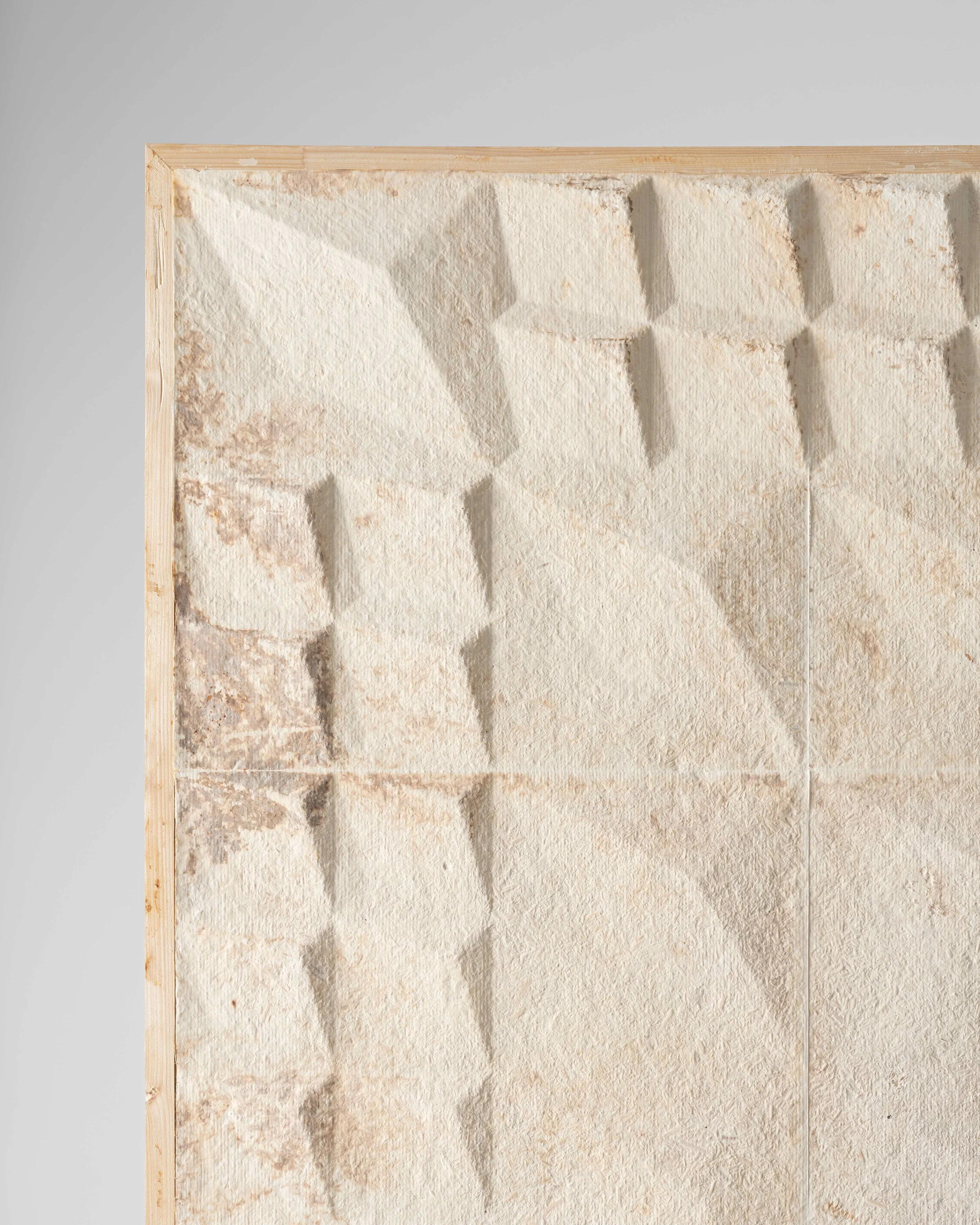HOME: Mycelium in Architecture
Year: 2021-2023
Team: Eda Özdemir, Nadja Nolte, Andrea Rossi, Nazanin Saeidi, Alireza Javadian, Albert Dwan, Ivan Acosta, Shibo Ren, Jessica Watts, Prof. Philipp Eversmann, Prof. Dirk. E. Hebel, Prof. Jan Wurm
Office and retail interiors have a relatively short service life of 5-7 years, with a variety of conflicting performance requirements for the materials used. The used composites often combine materials from the natural cycle, such as wood fibers, with materials from the technical cycle, such as adhesives, thus hindering possibilities of reuse or recycling. As a result, the environmental footprint of interior finishes is significant, and there are still limited choices of alternative bio-based, high-performance and affordable materials. This research aims at filling such gap by exploring bio-fabrication approaches through the integration of mycelium and additively manufactured timber reinforcement grids.To address the described lack of bio-based materials for interior fittings, we propose an innovative wood-mycelium composite to enable CO2-neutral, circular interior construction for office spaces. The objective is to engineer the build-up and growth process of alternative mycelium-based materials with distinct mechanical and acoustic characteristics, suited for a wide range of applications as interior fittings. To achieve this, a novel material concept based on the combination of a mycelium matrix with a reinforcement grid composed of veneer strips is currently being developed. These reinforcement grids are produced using a custom additive manufacturing method that deposits continuous timber fibers in 2-dimensional or 3-dimensional layouts, binding them using an adhesive-free ultrasonic welding process. Once such grids are produced, a base substrate compose of hemp hurds, a waste product from hemp cultivation, inoculated with mycelium of the Ganoderma species, is combined in a mold with the grid. The resulting element is grown in an incubation chamber with constant relative humidity of 95% for few days. During growth, the mycelium consumes nutrients in both the substrate and the veneer stripes, growing a filamentous structure that binds the two together, creating a composite material. Performance customization is possible by changing the position and layout of the reinforcement grids in relation to the mycelium matrix, similar to how steel reinforcement is added to concrete elements to increase their structural capabilities. Once fully grown, the resulting components can be unmolded and either air- or oven-dried. Once dry, they display a good level of strength and a very low weight, which makes them ideal for usage in interior fittings.



